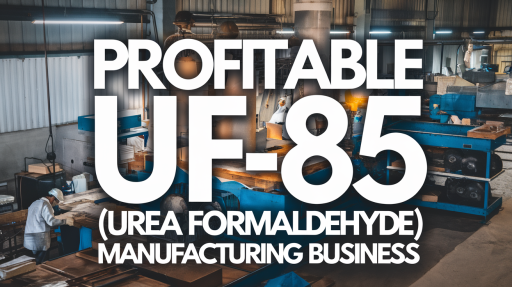Among all these fields of tobacco processing, a curiosity stands out – the extraction of nicotine powder from tobacco leaves. This particular approach also has profound implications beyond nicotine products and contributes to the inward investigations into the effects of the high-technology processing. This blog examines the nitty-gritty of this process with an explanation based on the history, technology, uses and future of this process.
Read more about : Introduction to Nicotine Powder Manufacturing
Historical Context and the Evolution of Tobacco Processing
Tobacco is one of the oldest known crops that have been in use for thousands of years, being consumed in the form of cigarettes, cigars or pipe. Nevertheless, as it has become apparent to people what nicotine is, this toxin and its effects, the interest in purifying tobacco and isolating nicotine for better use germinated.
These earlier techniques were primitive and non-very efficient, providing small amounts of nicotine and generating chemical residue waste. In the long run, the need for better methods, cleaner processes pushes development into better extraction processes that provide higher rates, safety and environmental friendly methods included in the process.
The Modern Extraction Process: From Leaf to Powder
Tobacco leaves still holds nicotine in them, different extraction methods been employed in the present day civilization, each stage in the method been planned to ensure maximum yield with minimal impurities. This segment describes the usual processes of processing them from raw tobacco leaves to high pure nicotine powder.
Harvesting and Preparation
This starts by harvesting tobacco leaves in such a way that they selected during the time that they contain the highest nicotine concentration. Following the harvest, the leaves go through a curing process that may take different forms depending on the experience of nicotine content. Techniques of curing comprise of air-curing, fire-curing, flue-curing, sun-curing; all of which changes the chemical composition on the leaves.
Initial Processing
Finely ground after curing the leaves are subjected to extraction. This involves spreading and reducing the leaves into a fine powder to enhance interaction with the solvent since the larger surface area increases the amount of surface in contact with the solvent.
Solvent Extraction
This entails putting the ground tobacco into a solvent, mostly an organic one such as methanol or ethanol where nicotine dissolves in. The recent developments in the solvent extraction involve the use of environmentally friendly solvents and proper conditions that enhance high yields of nicotine and low amounts of byproducts.
Nicotine Isolation and Purification
The solvent containing nicotine is then purified through a number of steps as described below. An additional process of purification which is distillation and filtration is used to eliminate the impurities and solvents which may remain in the sample.
Final Product: Nicotine Powder
The last output is a concentrated nicotine powder from tobacco leaves, that can be used in certain applications, mostly relative to agency’s aim. The powder form also has the advantage of measurement since it is a vital property especially for health purposes and consumers.
Know About Business Related : Tobacco leaves
Technological Advancements and Innovations
Technological advances in the extraction of nicotine have seen numerous changes in an attempt to work out enhanced methods with lesser risks to human health and the environment. Among these, the following are important:
CO2 Super Critical Fluid Extraction: This is a method of extraction that uses carbon dioxide placed in a supercritical state as the solvent instead of organic solvents. It is highly efficient, non-prolonged solvent residue and is most preferred because of being eco-friendly.
Enzymatic Extraction: This method involves the use of enzymes in the breaking of nicotine cell wall which increases efficiency and reduces on the use of chemical. It is at still at its developmental stage and its application is still on trial in industries.
Ultrasound-assisted Extraction:This technique is based of the destruction of the cell walls through the use of ultrasonic waves thus allowing the solvent to dissolve the nicotine. It is quicker more often than not, than traditional means and methods.
These innovations do not only enhance the quality and production of nicotine powder from tobacco leaves yield but also fit into the present trends of environmentally friendly forms of production in industries.
Also Know About : Nicotine Manufacturing Plant
Applications and Implications
Nicotine powder extraction from the tobacco leaves affects many industries and consumerism practices.
E-Liquids and Vaping
It also indicates that since it is in powder form and highly concentrated, formulators have an option of formulating various products that meet various consumer pulling power when it comes to nicotine intensity and preference of flavors.
Pharmaceutical and Therapeutic Uses
These products help the smoker quitting the habit as they get a regulated amount of nicotine to manage withdrawal signs, but unlike smoking, they have no health impacts.
Research and Development
The possibility of obtaining high-purity nicotine powder has aides in initiatives for using the compound in other applications other than quitting smoking.
Environmental and Regulatory Considerations
Several agencies, including FDA and EMA, supervise the nicotine products for their safety and efficacy, especially in NRTs and the consumer vaping products.
The Future of Nicotine Powder Extraction
In the future, some development opportunities can be expected in nicotine extraction technology. Further advancement into the energy-saving extraction techniques and new uses of nicotine powder shall define the industry’s future trends. Consequently, there may be changes and subsequent regulation of nicotine extraction as the policies for public health change, hence affecting the market in such a field.
Also Know More About : A Business Plan For Nicotine From Tobacco Waste
Conclusion
The approach used to process the tobacco product involves extraction of nicotine powder from the tobacco leaves, which is a new innovation in the tobacco industry. It is more efficient than previous methods of extracting nicotine powder from tobacco leaves and aligns well with the technological development in current society. For medical, commercial or research purposes, nicotine powder is one of the most active and rapidly growing products in the market today.






